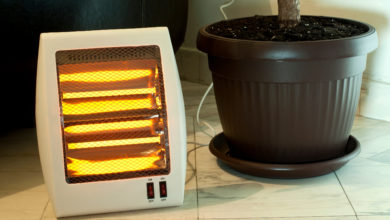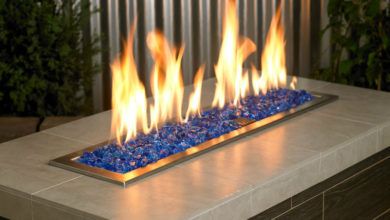We all “kind of” know what HVAC is, but a lot of us are also missing or misunderstanding a lot of the HVAC basics that are quite important for any homeowner. You don’t need to be on the lookout for HVAC jobs to benefit from expanding and developing your HVAC knowledge. So, let’s go through some “HVAC training” and delve a little bit into what HVAC is and what it entails.
What is HVAC?
HVAC is a major sub-discipline of mechanical engineering that encompasses a lot of processes, types of devices, airflow management systems, and more. IT covers all the systems that deal with moving air between indoor and outdoor areas, heating and cooling systems, air purifying, humidifying, and dehumidifying systems, and other related systems. Simply put, HVAC covers all units, electric devices, and systems that work to keep us cozy and healthy at the right temperatures and air quality levels.
What does HVAC stand for and what is its purpose?
It’s well-known that HVAC stands for “Heating, ventilation, and air conditioning”. The devices and systems that fall into these categories can be quite different and unique in the ways they operate but they all have the common purpose of keeping the air quality and temperatures in our residential or commercial surroundings at the appropriate levels.
In a lot of cases, this purpose of HVAC systems may seem like a luxury but it’s become much more than that a long time ago. The applications of HVAC systems in commercial settings nowadays are innumerable given how many food, cosmetic, pharmaceutical, and other industry would simply crumble without adequate HVAC support.
Even in residential settings, HVAC devices do much more than keeping us cool in the summer and warm in the winter. HVAC devices can purify and dehumidify the air in our homes, thus keeping it clean and healthy for us. They also manage and sustain the airflow in our homes which is otherwise dampened by the fact that our homes are so well isolated. Back in the day, even just a century ago, people’s homes had enough openings in their walls, windows, and doors for there to be a constant airflow indoors. And while this was negative in many ways, it at least kept the air in their homes constantly circulating. Today, our homes are so well isolated from the outside elements and pests that we need good HVAC systems to keep our indoor air in good circulation and quality.
There are many ways in which the various HVAC systems achieve air purification and temperature control. Air conditioning units, for example, utilize the so-called phase conversion process which takes advantage of the fact that when liquids convert into gases they absorb heat. This can be done in various ways, with a single phase AC transformer, a three-phase AC transformer, or a five-phase AC transformer. Either way, the base principle is the same – AC units use special chemical compounds called “refrigerants” that the warm air is sucked through and that cool it off as they themselves get warm enough to turn into gases.
The process can easily be reversed too with the simple addition of a reversing valve. An AC with such a valve can easily double as a heat pump and instead of dumping the hot air outside it can expel the cold air outside and pump the warm air inside.
What are the main terms to know about HVAC?
As you can see, there’s quite a lot to know about HVAC. We couldn’t possibly cover all the intricacies of the field in one short article but here are the basics you might want to familiarize yourself with first:
- Air changes per hour. This points to the ventilation rate per volume of space. It’s equal to the number of times per hour the volume of a physical space is fully exchanged.
- Condenser. This is a key component of the refrigeration cycle that removes heat from the system or ejects heat into it. The condenser is the hot unit on the side of the air conditioner or the heat pump.
- Flow. This marks the amount of fluid transferred per a certain amount of time.
- Diffuser. This is the unit in an HVAC system that separates the different air vanes and distributes them in different directions.
- Dehumidifier. A unit that extracts the humidity out of the air by cooling it off and then re-heating it to its original temperature.
- Heating coil. This is the part of a heating unit that conducts heat.
- Heat pump. This is a compressor unit that cycles hot and cold air. It’s designed to move heat energy in the opposite direction of the standard heat flow, or in other words – to warm up a specific space.
- Intermediate fluid. This is a liquid or a gas that transfers heat from one heat exchange to another.
- Radiation. Transferring heat from one surface to another directly, without heating the intermediate air.
- Terminal unit. The component that houses the cooling coil, the heating coil (the coils that conduct cold and heat in the unit), and the automatic damper (the gate/plate on a duct that controls the air flow).
- Thermostat. The system that monitors and controls the heating & cooling systems.
The history of HVAC
HVAC is a constantly developed and evolving field of mechanical engineering and a lot of humanity’s greatest minds have contributed to it throughout the years. From Nikolay Lvov and Michael Faraday, through Reuben Trane and Sadi Carnot, to people like Edwin Ruud and James Joule.
The first air conditioning system itself has been preceded by a lot of other HVAC inventions that have come before 1902 when Alfred Wolff designed an AC system for the New York Stock Exchange. It was in 1899, three years earlier that something along the lines of an “HVAC school” emerged thanks to Coyne College’s HVAC training courses. Nowadays there are even online HVAC training courses offering HVAC licenses and HVAC certifications.
Conclusion
HVAC systems do a lot of great things for us and have become a necessity in most modern day homes. What’s more, the HVAC field has yet to expand and progress even more so it’s definitely a good idea to stay up to date with the newest trends and developments in HVAC.





